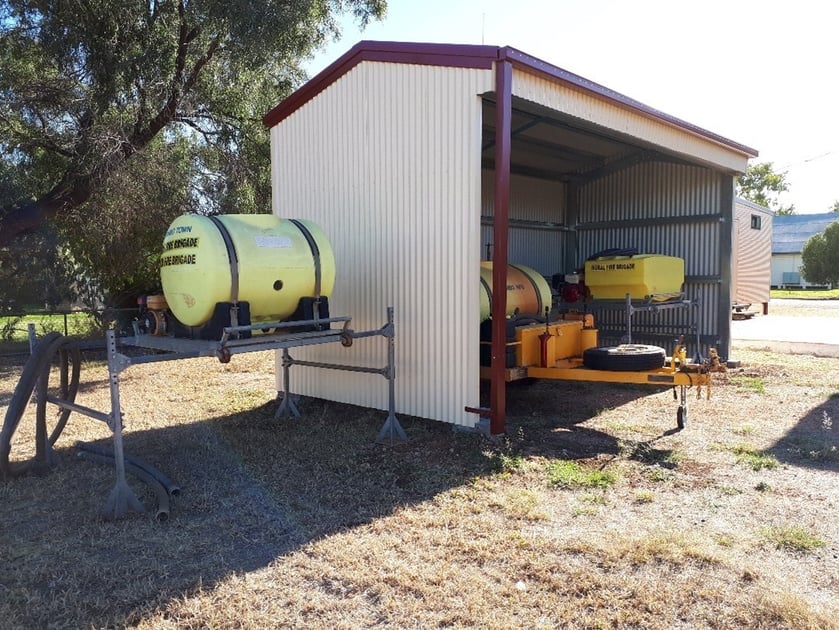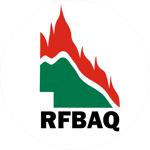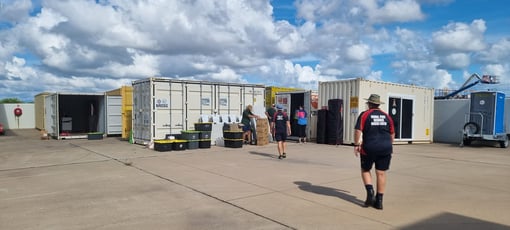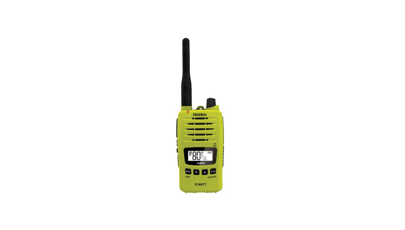Primary Producer Brigades in Queensland

RFBAQ

All Rural Fire Brigades in Queensland are the same in legislation.
The 1,400 brigades are classified internally as one of 5 different categories, but in reality, there are only 2 categories: truck or non-truck brigades (Primary Producer Brigades, PPBs).
60% of Rural Fire Brigades in Queensland do not have a state supplied fire truck, and most of these PPBs don’t want one. This is something that weirds out other fire services in Australia and many of the newly hired staff in the Queensland Fire Department or those from non-rural backgrounds.
Primary producer brigades operate in the necessity of supporting your neighbour in their time of need. The gear used is often dual purpose and has a valuable link to everyday life such as watering stock or maintaining crops. Often the ‘Fire Brigade' is another cog of the many community groups in the small communities making up Queensland.

5,000L skid to go on body truck or tipper
Why?
Across Australia, irrespective of your state or territory, over the last 100+ years people have chosen to come together and form volunteer fire brigades. These brigades were formed out of community need and desire and not by direction of a central authority.
These brigades, while geographically different and facing differing risk types, all produced models of self-governance that looked remarkably similar, and these brigades were well supported by their communities.
The contract that these groups of people had with the ‘state’ was that the volunteers would defend their communities and the ‘state’ would provide workers compensation support and enabling legislation.
For many brigades this simple contract still defines how they choose to structure their brigades and their relationship with the ‘state’.

2,000L firefighting trailer
Who
PPBs use fire proactively in their land use and have excellent skills in back burning to manage an unwanted fire. Water is to assist with mopping up rather than the primary tool of extinguishment, a significant difference between city and country.
Primary Producer Brigades come in 3 subsets:
Cane Brigades
Brigades based in cane production areas much like other PPB’S have access to specialised equipment that’s designed for working in the “long grass”. Modified tractors to operate above the height of cane and large water tenders make the difference when working a cane fire. Often local arrangements between the RFSQ Area Office and the brigade can enhance these specialised assets to work amongst the cane fields where typical fire appliances won't go or pose a risk of getting caught.
Through generations of knowledge on how to handle fire when working amongst the fields proves beneficial not only in the harvesting process but also when an emergency arises. The skilled ability of members comes to light when they can work a going fire in a paddock and keep it contained all the while amongst others ready for harvest. Most times the “trash” that used to be burnt regularly is now a vital asset to the farmer and as such not something to be lost.

Cane trailer to be towed by a tractor
Broadacre
Members in these areas typically manage large cropping operations and have a diversity of farm-based gear. Often members have access to well suited machinery such as spray rigs and various ploughs and implements. These tools are well suited for combatting fires in this landscape, facing challenges such as large crop fires and protecting other infrastructure.
Grazing
Often working in a variety of land types such as the large country in the north and west, right through to the steep ranges in the east for some parts of the state. Ideal equipment varies and often needs to be beneficial for many purposes, a variety of firefighting equipment based on utes, trucks to support earthmoving (graders, dozers) all the while using the key tool - fire.
For a great understanding of fighting desert grass fires using the Brompton Rat and grader, go to this video on the RFBAQ YouTube channel.
Weight of attack and speed of response
There are over 3,800 slip on units and 400+ fire trailers in service across Queensland.
It can be common to see PPBs with 4 to 6 slip on units or fire trailers, and these will be spread not only across the properties in the brigade area but also pre-positioned is areas prone to fire or that are easily accessible to all brigade members.
This results in not only a very quick response from the landholders, but also 4 – 6 vehicles on the fire ground.
If the fire service was to replace the 4 to 6 slip on units or fire trailers in the brigade with 1 fire truck, the number of hoses, firefighters and water on the fireground would significantly decrease and the state cost of supporting the vehicle would exponentially increase.

L to R: 800L slip on with speedloader. 1,000L firefighting trailer. 500L slip on with speedloader.
PPB Cost
The fire service provides ‘tune up kits’ free of charge to brigades for their fire trailer and slip on units.
The fire service also swaps out pump/engine combinations where necessary and supplies PPE and training to PPB members.
The vehicles that are used on the fire ground are the property of the brigade members and can be either registered or unregistered but in a roadworthy like condition.
The Fire Service holds a comprehensive motor vehicle insurance policy which covers rural fire brigade appliances and privately-owned vehicles made available to brigades during a bona fide brigade activity.
With limitations and conditions, the Fire Service also provides reimbursement for some private equipment and machinery which is damaged, lost or stolen during attendance at a bona fide brigade activity.
To give each of these PPB brigades a fire truck, put a shed around it, service it, fuel it and replace it every 20 years is not only financially and administratively unachievable, but it would also result in a decrease in the community’s ability to defend itself.
Fire Service Act 1990
152B Use of unregistered vehicle on road
(1) This section applies if—
(a) an unregistered vehicle (the vehicle) is being used on a
road—
(i) by a rural fire brigade or a fire service officer assigned to RFSQ—
(A) for carrying persons or equipment for the purpose of preventing, controlling or extinguishing a fire; or
(B) for the purpose of training relating to fire fighting or fire prevention; or
(C) for another purpose authorised in writing by the commissioner; or
(ii) by a person, and for a purpose, prescribed by regulation for this subparagraph; and
(b) the vehicle is clearly identified as a vehicle of a rural fire brigade; and
(c) an insurance policy of the kind mentioned in the Motor Accident Insurance Act 1994, section 23(1) is in force for the vehicle.
(2) A regulation under subsection (1)(a)(ii) may specify the types of unregistered vehicles that the person may use on the road for a prescribed purpose.
(3) The provisions of the Transport Operations (Road Use Management) Act 1995 that prohibit the use on a road of an unregistered vehicle, unless the use is authorised by a permit under that Act, do not apply in relation to the vehicle.
Conclusion
Queensland is the most decentralised state in Australia.
‘Rural Fire’ in Queensland is a broad church; from a cane brigade that has 100% membership of all adults over 18 years old in the brigade area and holds 1 meeting a year that is also the Christmas Party through to multi truck brigades that fund, train and undertake large animal rescue or have a fire boat.
While our model of Primary Producer Brigades is being questioned within the QFD, news reports from NSW show that the NSW Government is trying to re-engage with landholders who want to help themselves and their neighbours - https://www.abc.net.au/news/2025-10-01/incentive-helps-farmers-register-firefighting-vehicles/105838510
This diversity of brigade type reflects the diverse communities and land use, and is something to celebrate and encourage.

Greenbank RFB large animal rescue

Wasp Creek RFB fireboat

RFBAQ
Blog posts
Related Articles.


RFBAQ
Northern Region Operational Support Group cyclone preparations
NROSG members have been busy bees over the last few days in preparation for the cyclone coming our...

